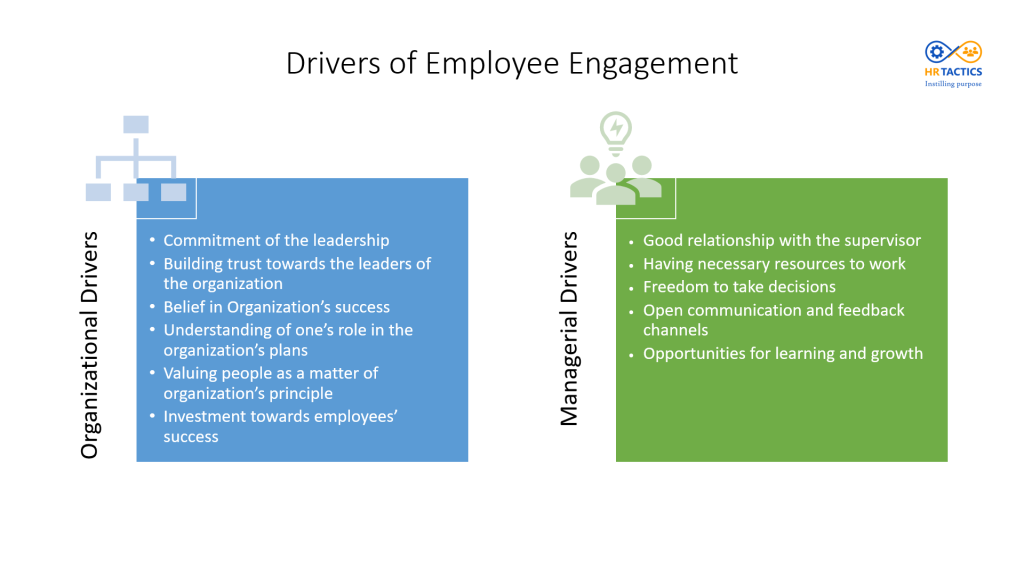Employee Engagement – The crux of the matter

Employee engagement is a key driver of organizational success. It is a critical component of employee satisfaction, which is a focus area for companies around the globe. Employee engagement describes employees’ enthusiasm and dedication toward their job and company. The goal is to instill a sense of pride among employees and make them feel a part of the company’s success. So that they strive to give their best and consider their positions at the organization beyond just the paycheck. In this blog, we will discuss what employee engagement really is and how can organizations drive it.
Employee Engagement or Fun?
For many companies, employee engagement is merely limited to activities like celebrating birthdays, team outings or an annual gathering. But the concept is much deeper and broader than just conducting “fun” activities. Its goal is to achieve employee commitment and connection to support higher retention of talent and improve organizational performance. Committed employees will contribute more towards the achievements of the company’s goals and generate better business value with their dedicated work.
Sometimes employee engagement is used interchangeably with job satisfaction. However, there is a difference between the two, even though there may be some overlap between the drivers of the two. Job satisfaction pertains more to the personal goals of the employee while engagement is concerned with being actively involved in organizational goals.
Drivers of Employee Engagement
Employee Engagement Drivers can be broadly categorized into Organizational and Managerial Drivers. As the names suggest, organizational drivers are spearheaded by the organization and the leadership team, whereas managers and team leaders have a major role to play in managerial drivers.

Cost of Disengagement
There can be different levels of engagement for an employee based on their perceptions and involvement in the workplace. These are measurable and can range from Highly Engaged to Disengaged. Highly engaged employees have an intent to stay longer in the company, foster positive feelings about the employer and are brand advocates for the company. Disengaged employees, on the other hand, are disconnected from the missions and goals of the company and lack commitment. They may sometimes harbor negative feelings towards their workplace.
What does this mean for organizations?
Disengaged employees not only cause intangible harm but also losses that can be quantified. The contribution and performance of disengaged employees are directly linked to the work environment and in turn, to the growth of the organization. According to a Global Benchmarking Study by Great Place to Work, some regions of the world have reported employee disengagement as high as 48%. These employees are likely to have lower productivity, higher absenteeism and ultimately lower profitability. Some studies suggest that a disengaged employee can cost the company 34% of its annual salary. For a small company that has poor engagement rates, this can cost millions out of their profit. So, investing in employee engagement makes a lot of sense for employers, not only to maintain a conducive work environment but also to secure the future of their business.
Is there a Right Way for Employee Engagement?
Employee engagement is not a handful of activities that need to be conducted and checked off the list. It is a concept that needs to be initiated from the time of the candidate interview and continued throughout the lifecycle of the employee. There are various touchpoints throughout the employment lifecycle of an individual. These need to be identified to pinpoint those where successful engagements can happen. This can be across various platforms – in person or online.
Watch out for my next blog that discusses the right approach to employee engagement.
